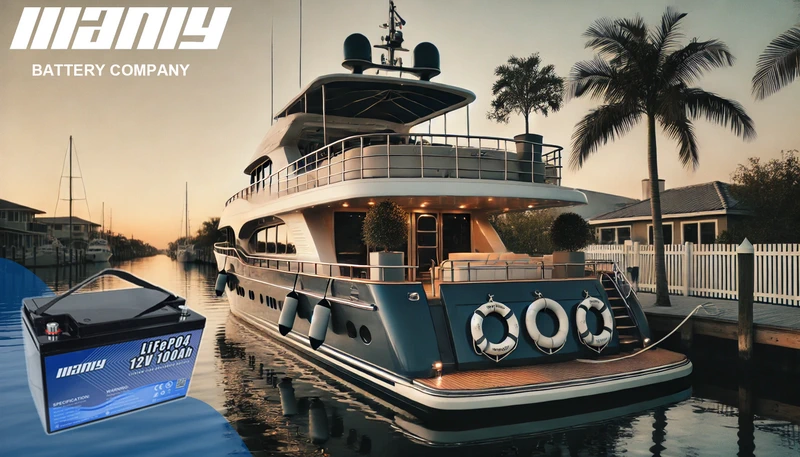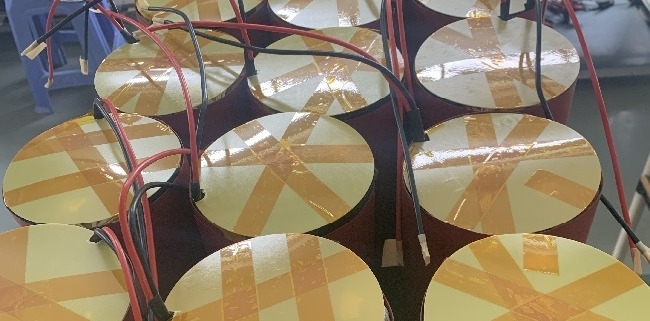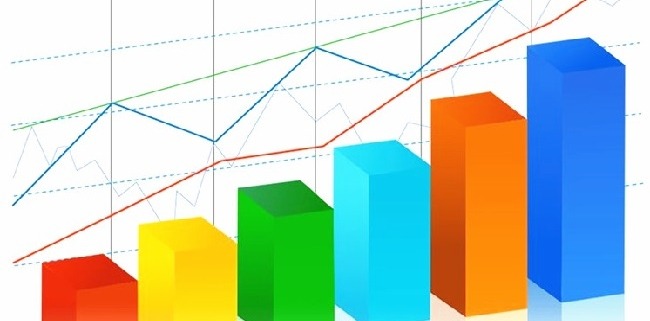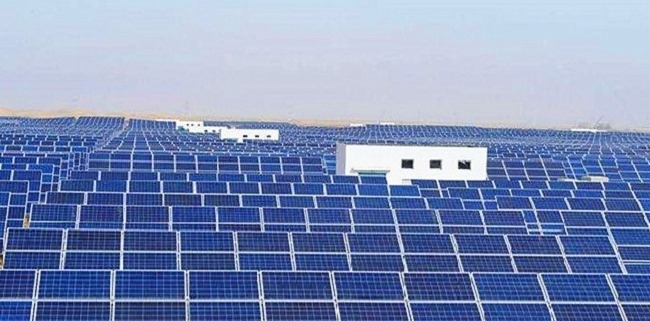What Type of Battery is a Marine Battery? A Detailed Breakdown
Table of Contents
- What Type of Battery is a Marine Battery? A Detailed Breakdown
- What is a Marine Battery?
- Different Types of Marine Batteries and Their Features
- The Best Choice: LiFePO4 Batteries for Marine Use
- Why LiFePO4 Batteries Are the Best Marine Batteries?
- Conclusion
- FAQ
- Hot Search
- Australia customer 600pcs 25.6V 28.8Ah Lithium iron phosphate battery for Solar system ,ready to test.
- Lithium battery raw materials continue to rise, how long will the tight supply of raw materials last?
- French EDF company won the bid for Peru’s 100MW photovoltaic + energy storage project
Maintaining a consistent and dependable boating experience depends on choosing the right marine battery. Whether you use a trolling motor, start your engine, or run electronics, the appropriate battery type will make all the difference. The several choices for batteries make many sailors find it difficult to choose the right one.
This article will break apart lead-acid, AGM, gel, and LiFePO4 batteries as well as other types of marine batteries. You will learn every type in great depth, including its benefits, drawbacks, and optimal uses. By the conclusion, you will understand the reason LiFePO4 batteries are the best fit for marine applications.
What is a Marine Battery?
Designed especially to withstand adverse sea conditions, a marine battery is Unlike automobile batteries, which only provide short bursts of electricity to start an engine, marine batteries must deliver constant power for lengthy durations while tolerating vibrations, dampness, and temperature variations.
- Usually driven by its intended use, marine batteries are categorized:
- The starting battery runs the boat motor. It gives a brief, sharp boost but lacks long-term vitality.
- Deep-cycle batteries run constantly for lights, fish finders, and trolling motors among other equipment.
- A dual-purpose battery sometimes performs worse than dedicated beginning and deep cycle batteries, even if it aims to combine two uses.
These classification indicate the use of a marine battery, although the most important factor influencing battery performance is battery chemistry. Chemistry of a battery determines its general performance, longevity, efficiency, and maintenance requirements.
Different Types of Marine Batteries and Their Features
The several kinds of marine batteries are listed below, together with their characteristics:
Lead-Acid Marine Batteries
Lead-acid batteries have been used in marine conditions as they have been rather competitively priced and widely available for decades. These batteries chemically react with lead plates and sulphuric acid to generate power.
Flooded Lead-Acid (FLA) Batteries
Flooded lead-acid batteries are the most classic form. They demand consistent maintenance, including topped off distilled water. They are heavy, require ventilation, have a shorter lifetime than other battery types even if they are economically priced.
Sealed Lead-Acid Batteries
Lead-acid batteries sealed eliminate maintenance needs and are spill-proof. Two most widely used variants that improve performance over typical flooded lead-acid batteries are AGM (absorbed glass mat) batteries and gel batteries.
Advantages of Lead-Acid Marine Batteries
Lead-acid batteries are reasonably cheap and rather numerous. Their great starting current makes them worth using for engine cranking.
Disadvantages of Lead-Acid Marine Batteries
Lead-acid batteries need regular maintenance, weigh a lot, and charge slowly. Usually running for two to four years, their lifetime is short; they break down upon discharge below 50% capacity.
AGM (Absorbed Glass Mat) Marine Batteries
AGM batteries are spill-proof and maintenance-free by absorbing the electrolyte using fiberglass mats, therefore improving traditional lead-acid designs.
How do AGM Batteries Work?
By immobilising the electrolyte inside the glass mat, AGM batteries reduce the possibility of leaking and hence maximise power efficiency. Since this structure lets for better resistance to vibrations and faster charging periods, AGM batteries are a more durable replacement for flooded lead-acid batteries.
Advantages of AGM Marine Batteries
Zero maintenance and faster charging than other lead-acid models describe AGM batteries. Their lifetime is between three and six years, and they have more resistance to deep discharges.
Disadvantages of AGM Marine Batteries
AGM batteries remain heavier than lithium alternatives even with their superior performance. On a tight budget, they also appeal less to boaters since they cost more than flooded lead-acid batteries.
Gel Marine Batteries
Gel batteries use liquid electrolytes from a silica-based gel. Less leaks and greater deep discharge performance are made possible by this chemical composition.
How do Gel Batteries Work?
The gel-based electrolyte lowers chemical reactions, therefore reducing the possibility of overcharging or deep discharge. Applications needing constant, long-term power will find ideal use for these batteries.
Advantages of Gel Marine Batteries
Gel batteries resist high temperatures, maintain a longer lifetime than flooded lead-acid batteries, and require no maintenance.
Disadvantages of Gel Marine Batteries
The slow charging rate of gel batteries is its biggest drawback. Furthermore expensive than AGM and flooded lead-acid batteries are they are. Less forgiving than other battery kinds, overcharging can damage a battery permanently.
The Best Choice: LiFePO4 Batteries for Marine Use
The most intelligent and powerful marine batteries are LiFePO4 (Lithium Iron Phosphate). Unlike lead-acid batteries, which rely on chemical interactions between lead and acid, they offer constant and dependable power by means of lithium-ion technology.
Why LiFePO4 Batteries are Superior?
Among their most important benefits are LiFePO4 batteries’ extended lifespan. Lead-acid batteries run two to six years; LiFePO4 batteries can run ten years or more. Since they weigh up to 70% less than lead-acid batteries and are more easily handled, they also greatly improve boat performance.
Charging time offers still another major advantage. Five times faster charging of LiFePO4 batteries than with lead-acid batteries Unlike lead-acid batteries, which have to be kept above 50% charge, they also enable total discharges free from battery damage.
Are There Any Drawbacks to LiFePO4 Batteries?
The sole negative of LiFePO4 batteries is their starting cost. For seasoned sailors, however, they are the most affordable choice because of their long lifetime, fast charge times, and low maintenance needs.
Why LiFePO4 Batteries Are the Best Marine Batteries?
LiFePO4 batteries have long-term benefits above all other battery models, even if their initial expense makes many sailors unwilling to switch. Boats carrying LiFePO4 batteries had 30% longer running lifetime on electronic systems and trolling motors, according a study by marine engineers.
Savings in weight also improve performance. LiFePO4 technology lets a boat greatly reduce the weight of its battery, therefore enhancing fuel economy and general maneuverability. Boaters looking for dependability, fast charging, and long-lasting performance would best invest in LiFePO4 batteries.
Conclusion
The perfect sailing voyage depends on selecting the right marine battery. Though lead-acid, AGM, and gel batteries are still somewhat popular, none give the efficiency, lifetime, and long-term savings LiFePO4 batteries offer.
LiFePO4 batteries from MANLY Battery provide the finest answer if you want a dependable and high-performance marine battery. Their innovative lithium technology guarantees exceptional energy economy, therefore assuring that your boat keeps running without the trouble of regular replacements.
For premium-quality marine batteries, visit MANLY Battery today and experience the next generation of marine power solutions.
FAQ
1. Is a deep cycle battery the same as a marine battery?
Let’s clarify: a deep cycle battery and a marine battery aren’t the same, although they have similarities. Here’s why:
A deep cycle battery provides a steady power flow over an extended period. It’s designed for applications that need consistent energy, like golf carts, RVs, or renewable energy systems. These batteries are built to handle repeated discharges and recharges without losing performance.
On the other hand, a marine battery is specifically made for boats. However, marine batteries come in two types: starting and deep cycle. A starting battery delivers a quick surge of power to start the engine, while a deep cycle marine battery powers your boat’s electronics and other devices.
So, while some marine batteries are deep cycle, not all deep cycle batteries work as marine batteries. If you’re choosing a battery for your boat, ensure it’s designed for marine use to get the most reliable power.
2. What are the three types of marine batteries?
Marine batteries come in three main types, each serving a different purpose. Understanding their roles helps you pick the right one for your boat:
- Starting Batteries: Starting batteries provide a quick burst of power to start your engine. They’re all about delivering a high-energy jolt for a short time. These batteries are not designed to power other devices, so they focus only on getting your engine running.
- Deep Cycle Batteries: Need power for your boat’s electronics, trolling motor, or other accessories? Deep cycle batteries are your answer. They deliver steady, long-lasting energy and can discharge and recharge multiple times without losing capacity. Perfect for extended trips or when you’re off the grid!
- Dual Purpose Batteries: As the name suggests, dual purpose batteries combine the functions of both starting and deep cycle batteries. They give you enough power to start your engine and supply energy to your accessories. They offer versatility but may not provide as much power as a dedicated starting or deep cycle battery.
Hot Search
Marine Lithium Battery Battery Manufacturer
Hello
Australia customer 600pcs 25.6V 28.8Ah Lithium iron phosphate battery for Solar system ,ready to test.
This batch of batteries is a combination of 72-shell 26650 lithium iron phosphate batteries 8S9P.
On the left side of the lithium iron phosphate battery is a positive electrode made of LiFePO4 material with an olivine structure, which is connected to the positive electrode of the battery by aluminum foil. On the right is the negative electrode of the battery composed of carbon (graphite), which is connected to the negative electrode of the battery by copper foil. In the middle is a separator, which separates the positive electrode from the negative electrode. Lithium ions can pass through the separator but electrons cannot pass through the separator. The battery is filled with electrolyte, and the battery is hermetically sealed by a metal casing.
Lithium iron phosphate battery has the following characteristics:
1. Super long life
The lithium iron phosphate battery can reach 2000 cycles and above under standard charging and discharging. The service life can reach 7-10 years
2. Safe to use
Lithium iron phosphate completely solves the safety hazards of lithium cobalt oxide and lithium manganate. Lithium cobalt oxide and manganese acid
Lithium will explode in a strong collision and pose a threat to consumers’ lives, while lithium iron phosphate has undergone strict safety tests and will not explode even in the worst traffic accidents, making it the safest lithium battery. .
3. High temperature resistance
The peak value of lithium iron phosphate electric heating can reach 350 ℃-500 ℃, while lithium manganese oxide and lithium cobalt oxide are only around 200 ℃.
4. Green and environmental protection
The raw material of lithium iron phosphate battery does not have any pollution and harmful substances, and it is recognized as a green and environmentally friendly battery.
If you have any 25.6V 28.8Ah Lithium iron phosphate battery for Solar system projects , please don’t hesitate to call MANLY here or email at [email protected].
Due to strong market demand for new energy vehicles and energy storage, the price of lithium battery materials continues to rise. As of the beginning of December, battery-grade lithium carbonate was quoted at RMB 209.99 per ton, an increase of 7.7% from the previous month. Four months ago, the price of lithium carbonate was less than 95,000 yuan/ton.
Year-to-date, the increase in lithium carbonate has exceeded 230%. The domestic average price of phosphoric acid, which is necessary for the production of lithium iron phosphate batteries, was RMB 10,500/ton on December 3, an increase of 109.3% compared with the same period last year. The prices of rare precious metals such as nickel, cobalt, and manganese have also continued to rise.
Since entering December, the third wave of price increases for lithium has started. The price of lithium carbonate will take the lead. It is expected that the price of battery-grade lithium carbonate may reach 250,000 yuan/ton before the Spring Festival.
With tight supply and demand and scarcity of high-quality resources, global competition for lithium resources has become fierce. Companies related to the industry chain have started a journey of “grabbing mines”. Lithium battery manufacturers in the middle of the industry chain have to face the pressure of rising costs.
According to Barrenjoey’s November 2021 forecast, the supply of lithium resources will continue to be tight in the next ten years, and the supply gap will continue to expand. By 2030, the gap between supply and demand will reach 1.2 million tons of LCE. The short supply situation will lead to an overall increase in the price of battery lithium materials.
EDF New Energy Company (EDF EN), a subsidiary of the EDF Group, announced that in a recent tender in Peru, the company has successfully won the bid and won a 100 MW photovoltaic and 100 MWh battery energy storage hybrid power project . The company will be responsible for the development, construction and operation of the hybrid solution, which will be connected to the microgrid in the town of Iquitos in the Peruvian Amazon region.
At the same time, EDF signed a 20-year power purchase agreement (PPA) with the state-owned power distribution company Electro Oriente. The company said that according to the contract, by 2026, the renewable energy company will provide electricity at a price that is more competitive than diesel.
EDF Renewable Energy said that new solar and battery projects will help remote towns offset 40% to 50% of diesel power generation.







